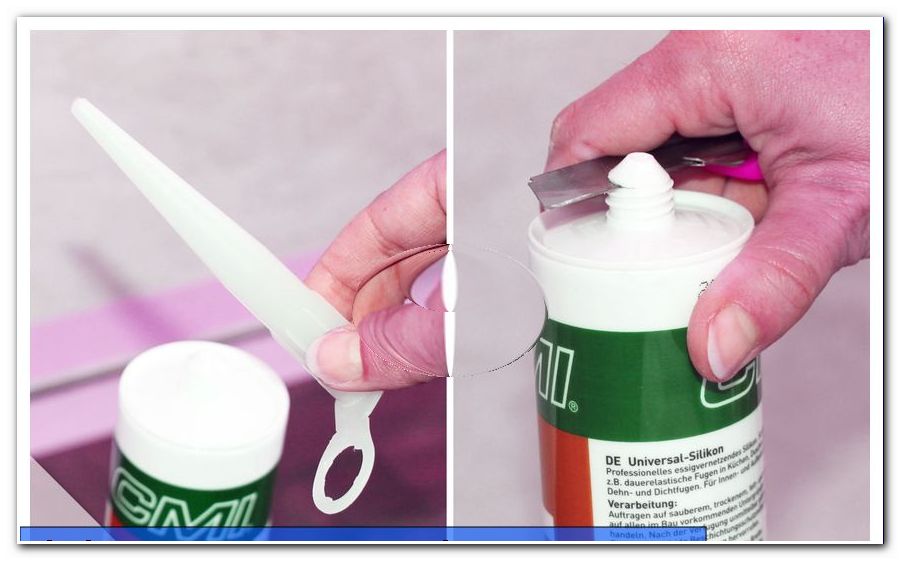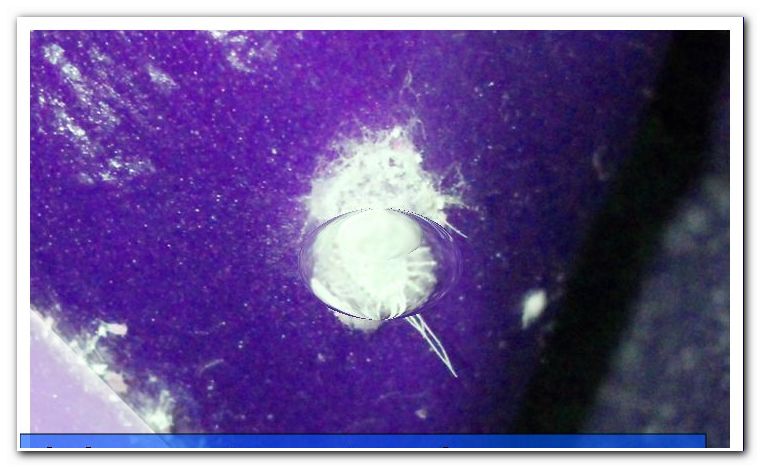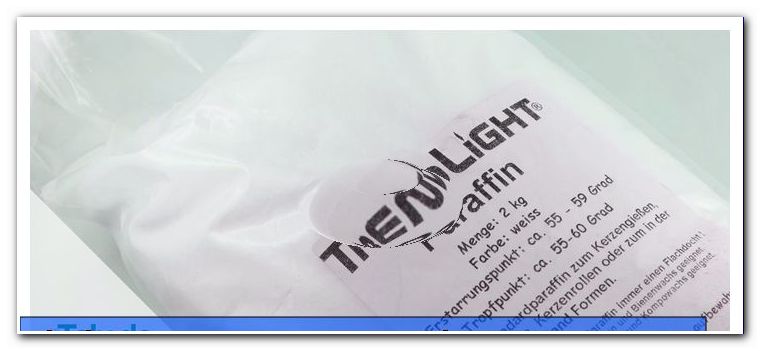The perfect flow temperature for your underfloor heating

- Costs and craftsmen
- flow temperature
- need
- Adjustment for different floor coverings
- tiling
- parquet
- laminate
Anyone who has walked barefoot over the tiles in the bathroom in the depths of winter knows how pleasant floor heating is. But in order for the temperature to be really comfortable, the underfloor heating settings must also be right. For this you need to find out the right flow temperature of the heater.
If the flow temperature of the underfloor heating is set too high or too low, this not only has unpleasant consequences for the feet or the room climate, but also wasting energy pointlessly. In addition, improperly adjusted floor heating will affect the substance of your building and the flooring. For example, laminate may be damaged by over-set bottom heating. Which temperature the supply of your underfloor heating should therefore have, we show you here.
Costs and craftsmen
You do not need a craftsman to set the right flow temperature. Only in case of problems with the right setting, it may be useful if a heating engineer sets the system correctly from the ground up and possibly checks it. The cost should be no more than 50 euros for a simple setting without the removal of any damage.
Tip: Make sure that the chimney sweep does not change the settings during its test.
Modern heating systems have a special setting that allows the chimney sweep to carry out their inspection. Nevertheless, many chimney sweeps adjust the equipment for convenience in the tests. An obscured time setting is the least problem. 
flow temperature
Basically, the flow temperature is just the temperature of the water that comes from the heater to heat the radiators or heating coils of the floor heating. If the heating elements have cooled the water by absorbing the heat, the return temperature remains. The cooler water is taken up by the heater and heated again to the flow temperature. The difference between flow and return is referred to by experts as temperature spread . On the basis of this gradient in temperature, however, experts can also read whether the settings are optimal or must be adapted.
Previously, a maximum flow temperature for the floor heating was still specified. This is basically superfluous today and therefore no longer provides a clue. The modern heating systems are subject to a DIN standard, which provides a cap, ie a limit, the maximum flow temperature. Therefore, you can not exceed the maximum flow temperature anyway. 
Unfortunately, there is a scientific calculation of the optimal flow temperature for underfloor heating. However, this is on the one hand extremely detailed and complicated and on the other hand hardly practical. Finally, which do-it-yourself and homeowner can reconcile the building's different heat transfer coefficients, calculate the spread, and then factor in the flooring's coefficients "> necessity
Why does the flow temperature have to be adjusted?
Not every building has an optimally insulated outer shell. Even the windows and doors are not always perfectly insulated. Thus, each building is already built completely different from the Dämmaspekt ago. This must first be taken into account when setting the flow temperature. These basic points are also important:
- too high a flow temperature overheats the rooms
- too low flow temperature undercuts the room
- strong temperature fluctuations lead to the formation of condensation
- Reference room temperature in living rooms is from 21 to 23 degrees
- optimum flow temperature depending on the insulation of the building
- Ideal value must also be achieved at extreme outside temperatures of more than minus 15 degrees
- lowest possible energy consumption

The "normal" flow temperature offers an extremely wide range, due to the different conditions regarding insulation, use of space and floor covering. Thus, the normal flow temperature is given with values between 15 and 60 degrees. New buildings, the so-called KfW-60-Class actually settle in the lower third of these values. These houses require between 20 and 25 degrees flow temperature.
Flow temperature too high - risk of damage
If the flow temperature is too low, just freeze. Damage hardly arises. However, if the flow temperature is too high, people and buildings can be damaged. Therefore, when approaching the right temperature you should first select a slightly too low temperature.
Consequences of too high flow temperature:
- high energy consumption
- Parquet and laminate can break
- it can cause temperature fluctuations, which lead to condensation
- Mold damage due to condensation
- swollen feet in elderly and sensitive persons
Adjustment for different floor coverings
Of course you can adjust the flow temperature throughout the year. But you can only determine the optimum setting on a particularly cold day in winter. To get the right settings, check the temperature at different points in the room directly on the top of the floor.
Tip: Create a cheap digital thermometer with an external sensor. In this way you can always check in between whether the underfloor heating reaches the right temperature on the floor. Personal perception is not always correct and depends heavily on one's own state of health.
tiling
Depending on how good the insulation is under the tiles, the optimum flow temperature can be very different. Also, the thickness of the tiles and the material can affect the setting. Even with the floor tiles, you should always check during the adjustment, how high the temperature is directly on the ground. As the tiles themselves can heat up and reheat even longer if you have already regulated the heating down, you should only reach a temperature of about 23 degrees at the bottom . 
For many tile floors, the supply in this country is set between 30 and 40 degrees . Depending on the insulation value of the building, try to obtain a similar value in order to optimally adjust the temperature upwards or downwards.
parquet
When the outside temperature is cool, a temperature of 25 to 27 degrees should be reached directly on the parquet floor. Always measure the parquet directly on the floor to set the flow temperature correctly. If at least 25 degrees are not reached, you should readjust the settings. 
Parquet does not store the heat as much as a tile or stone floor. The temperature at the bottom should therefore be much higher. Nevertheless, you should always increase the values very cautiously with a wooden floor, because the parquet can break at too high temperatures.
laminate
Basically, laminate flooring is a special case, because not every laminate is suitable for underfloor heating right from the start. When buying, pay close attention to the suitability for underfloor heating and the intended laying method. Although some products can still be laid on a heated floor, they may need to be fully glued or laid with glue. Especially the practical floating click laying leads to a problem with underfloor heating. When setting the flow temperature you should therefore start with really low temperatures and keep an eye on the floor covering. 
Tip: If the seams open too far, but the temperature in the room is not high enough, you will not be happy with the flooring in combination with the underfloor heating. It may then help to relaminate the laminate completely.
Tips for quick readers
- too high flow temperature will overheat the rooms
- too low flow temperature undercooled the room
- too high flow requires a lot of expensive energy
- Reference room temperature for living rooms 21 to 23 degrees
- optimum flow temperature depending on building insulation
- Measure temperature for setting on the ground
- Parquet floor about 25 to 27 degrees at the bottom
- Tiled floor lower floor temperature necessary
- Tile and stone floors store heat longer
- Parquet flooring can crack if temperature is too high
- Laminate floor Check manufacturer instructions for laying type
- If necessary, glue the laminate floor over its entire surface
- swollen feet possible due to high temperature




